Building Bridges for the Benefit of North Dakotans
The Dakota Conference on Rural and Public Health brings public health and medical providers together.
By Jena Pierce on
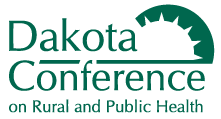 Where can
you learn about mind-body practices for healthcare
providers, building a rural cancer program, Alzheimer's
disease as a public health crisis, a look at policy
versus reality for mental wellness, and eliminating
hepatitis in North Dakota – all while
networking with various health professionals from across
the state? At the Dakota
Conference on Rural and Public Health.
Where can
you learn about mind-body practices for healthcare
providers, building a rural cancer program, Alzheimer's
disease as a public health crisis, a look at policy
versus reality for mental wellness, and eliminating
hepatitis in North Dakota – all while
networking with various health professionals from across
the state? At the Dakota
Conference on Rural and Public Health.
2024 marks the 39th year of the premiere statewide rural health conference, a unique partnership between the North Dakota Rural Health Association (NDRHA), North Dakota Public Health Association (NDPHA), the University of North Dakota (UND) College of Nursing and Professional Disciplines, UND's Center for Rural Health (CRH), and Altru Health System.
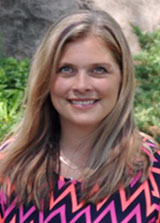
Kylie Nissen*, program director for the Dakota Conference, has overseen the planning of the two-and-a-half-day conference since 2007. Nissen is also director of the State Office of Rural Health at the CRH within the School of Medicine & Health Sciences at UND. The conference is facilitated by CRH.
"A large part of the Dakota Conference," says Nissen, who is also the executive director of NDRHA, "is to allow professionals the opportunity to hear ideas that are working in North Dakota from people that are implementing the projects. They can network and discuss ideas of how to make it work in their community."
Exchanging Ideas
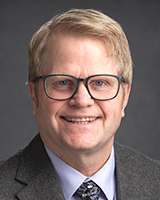
Mark Strand agrees. A professor in the Department of Public Health and the School of Pharmacy at North Dakota State University, Strand serves on the North Dakota Health Council, is a member of NDPHA, and is a frequent attendee at the Dakota Conference. He touts the partnership that makes up the conference and finds value in all of the conference's offerings.
"NDPHA has 198 members," Strand says, "and the Dakota Conference is the one event of the year that brings a large number of them together – for their annual meeting and for the learning that occurs at the conference. It provides a chance to learn from the experiences of other public health colleagues across the state, and build support networks. After all, many of the public health professionals in North Dakota work in public health units with fewer than 10 people, so they need support."
Strand also values the partnerships that come from the interdisciplinary connections the conference helps cultivate.
"In most of North Dakota, there are a small number of health professionals in the community, and they have to work together to address the health concerns of rural people," he shares. "The local public health unit partners closely with the medical providers working in the clinics and hospitals, so it makes sense to share their experiences."
Another important aspect of the annual gathering is to allow the NDRHA and NDPHA a chance to conduct official business while a majority of the members are gathered. The annual meetings are built into the conference schedule and occur concurrently.
A Unique Partnership
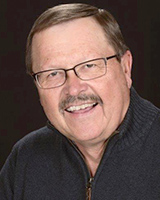
The idea for CRH and NDPHA to combine their annual conferences came to fruition in the mid-1990s. Keith Johnson, retired administrator for Custer Health (now known as Western Plains Public Health), remembers when the two groups decided to join forces.
"For years, both conferences danced around each other's schedules and subjects," Johnson says. "Both conferences suffered because, oftentimes, attending NDPHA meant that attendees couldn't go to the rural health conference, or the nursing directors of public health units would want to attend the rural conference, and so didn't attend the public health conference."
Johnson remembers a pivotal moment where public health districts and Critical Access Hospitals began working in tandem. In 1996, when he was president of NDPHA, he attended the Turning Point Conference, alongside staff from the CRH, and was introduced to the Future of Public Health Report. According to Johnson, the report "shook the ground" in both public health and healthcare circles.
He shares, "The Turning Point initiative defined core concepts of public health. This was totally foreign to us. At the same time, the healthcare system was moving along with the payment system toward more preventive health services, something that was pretty foreign to them. We teamed up in ensuing years to help each other. CRH was a massive help, both to public health and to Critical Access Hospitals, in providing community health surveys that were more than a marketing document."
"In Custer Health's region," he continues, "we teamed up with the hospitals to provide an overarching survey that actually measured the community. Workshops put together by CRH staff helped us define core concepts of public health delivery and to get used to the idea of not providing direct services. The rise of Community Health Centers (CHCs) pulled us further together. CHCs have prevention as a large part of their primary care strategy, which is right in public health's wheelhouse. Was it easy? No. Was it worthwhile? Yeah, definitely."
All of these issues have since been topics at numerous Dakota Conferences.
Boots on the Ground
The 2024 conference takes place on June 4-6, in Grand Forks, with a great variety of topics, research, and discussions. It consists of four keynotes, 20 sessions, four intensive workshops, a health policy panel with state legislators, a workforce panel, and a rural health awards luncheon. In 2023, the conference, which moves around the state, was held in Bismarck for the first time in over a decade and boasted the second highest for total participants with 437, with the record in 2010 with 474 attendees in Grand Forks. 2023 also had record exhibitors with 85, though typically the facilities that have previously been utilized have generally capped exhibitors at 70 or so.
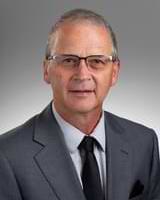
Pete Antonson served on the Dakota Conference planning committee for nearly 15 years. He recently retired after 22 years as CEO of Northwood Deaconess Health Center. He remembers how challenging it can be to select the right presentations for the right time.
"It is always a challenge to find the right blend of topics," Antonson remembers. "However, the emphasis of the Dakota Conference is different than other conferences we attend. With a dual emphasis on rural and public health, the topics tend to be more boots-on-the-ground in nature: practical and useful."
With a dual emphasis on rural and public health, the topics tend to be more boots-on-the-ground in nature: practical and useful.
Strand, a frequent presenter, believes working professionals and students derive benefit by attending sessions outside of their professional roles.
"All health systems are being held accountable for contributing to improving population health," Strand says. "But many hospital and clinic staff spend their days busily tending to the individual patients under their care. They seldom have the time to consider the question of why certain health problems are increasing in their community. The public health sessions provide technical and theoretical tools to understand population health and contribute to improving population health. And the same goes in reverse, many of the public health workers attend rural health sessions geared toward hospitals and clinics. Such collaboration is essential in a low population state like North Dakota where we need critical mass for efficiency and effectiveness."
Making the Most of Connections
The conference was canceled in 2020 and held virtually in 2021. But people missed the in-person interaction, collaboration, and camaraderie, says Nissen.
"Networking is the most important part of a conference," she continued. "Making connections and knowing who you can go to for support in the profession or with questions is so incredibly valuable. Especially in a rural state, there may not be anyone within 60 miles that has a similar job that you can talk to, where in an urban location, you may have someone one floor up that you can pop in and talk with. But, through networking, relationships form and enable people to be able to grab the phone and give a call to someone that is or has likely been in a similar situation. It's a way to not feel so isolated even with many miles keeping you physically apart."
Antonson agreed. "As an independent facility, I have always valued the development of relationships. It helps by meeting people that are doing the same thing, sharing the same frustrations, and at times having solutions for issues that we face."
"The value goes far beyond the conference," Johnson concludes. "The conference is better for the entire health community in North Dakota because we teamed up. I know other states shake their head in amazement at the barriers we have crossed to work together."
Continuing Education
Continuing education is an important component of the Dakota Conference. Up to 12 Continuing Education Units are available in a variety of categories including: long-term care, EMS, social work, dietetics, pharmacy, and more. Continuing Medical Education credits are also available for nursing, physicians, nurse practitioners, physician assistants, physical therapists, and others.
"The Dakota Conference is valuable," said Nissen, "in that providers and professionals are able to attend a large number of hours without having to spend a week away from work and having to pay for airfare to attend a conference."
Awards
On average, 14 awards are given out at the awards banquet and include categories for both rural and public health. Awards include: Outstanding Rural Health Provider; Outstanding Rural Health Volunteer; Emerging Rural Leader; Legislator of the Year; Outstanding Rural Health Career; Excellence in Diversity, Equity, and Inclusion; R-COOL-Health Scrubs Camp of the Year; Public Health Worker of the Year; Public Health Team of the Year, and several others. Nominations are solicited and encouraged for many of the awards.
Nissen said, "There is so much talent in this state and rural people tend to be very humble. This is a way to recognize some of the amazing people doing great things for healthcare in our state."
Immeasurable Value to North Dakota
The benefits the Dakota Conference has brought to all corners of the state is truly immeasurable, and unique. Johnson understands that better than most, and is proud of all that has been accomplished up to this point by the combination of rural healthcare and public health work.
I know other states shake their head in amazement at the barriers we have crossed to work together.
"The value goes far beyond the conference," Johnson concludes. "The conference is better for the entire health community in North Dakota because we teamed up. I know other states shake their head in amazement at the barriers we have crossed to work together."
*Kylie Nissen left the Center for Rural Health in early March 2024.


 is the communications manager at the Center for Rural
Health at the University of North Dakota School of
Medicine & Health Sciences in Grand Forks.
is the communications manager at the Center for Rural
Health at the University of North Dakota School of
Medicine & Health Sciences in Grand Forks.



